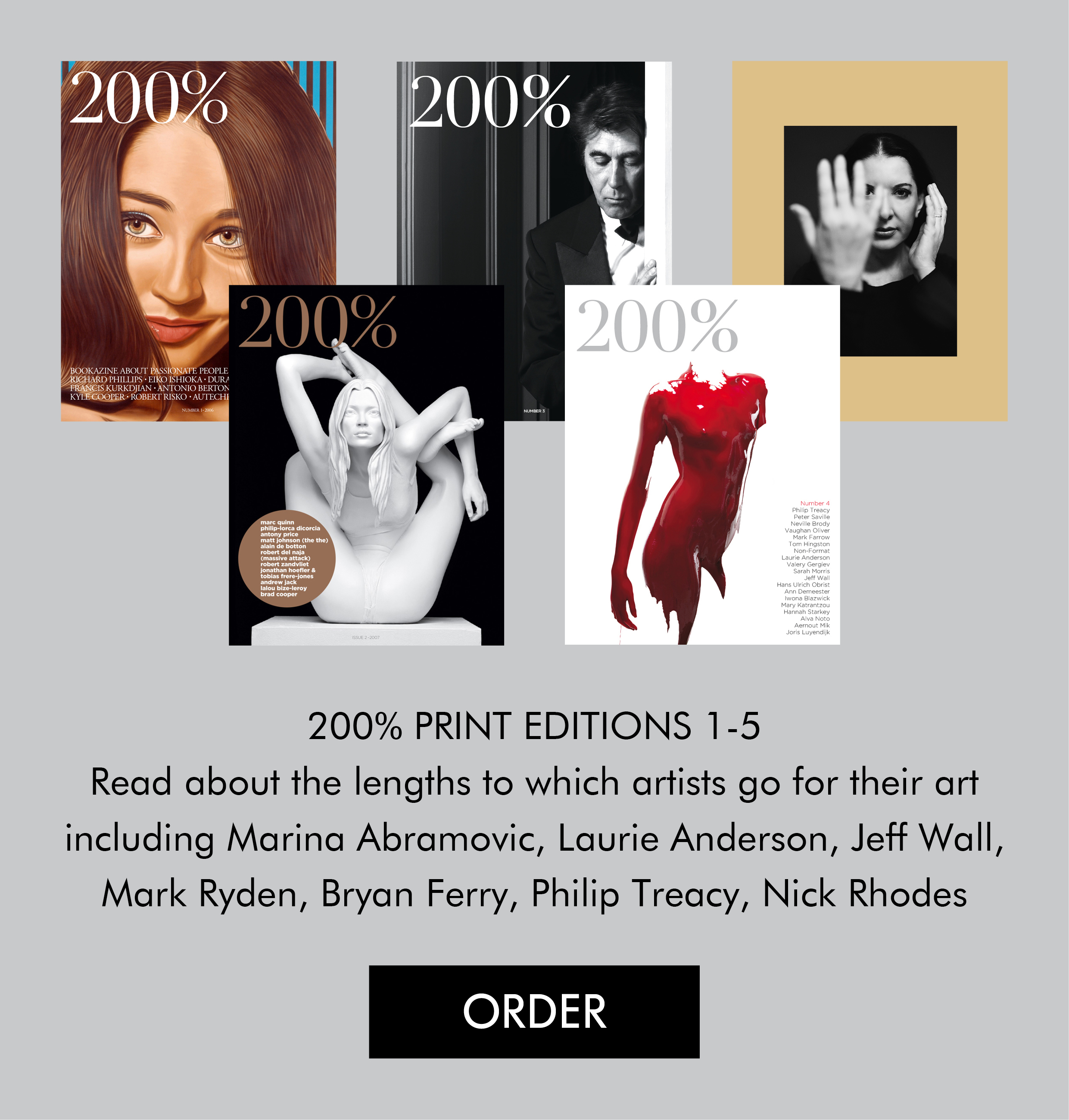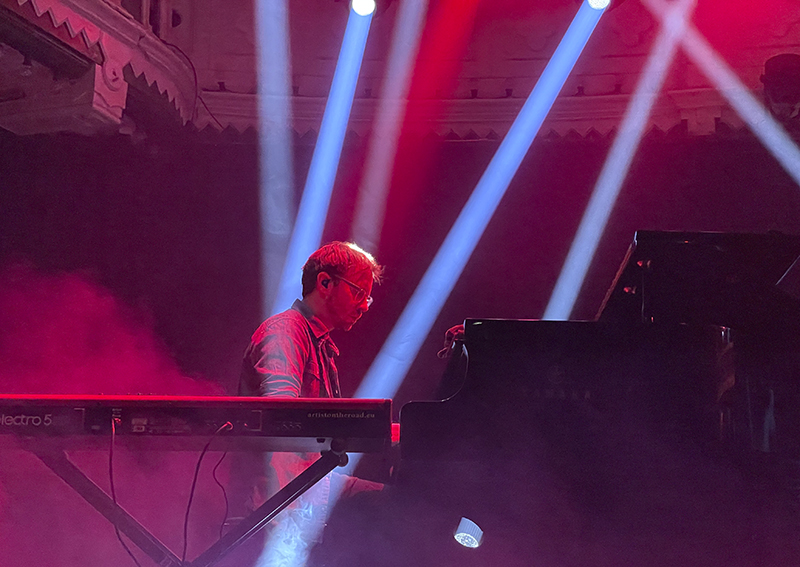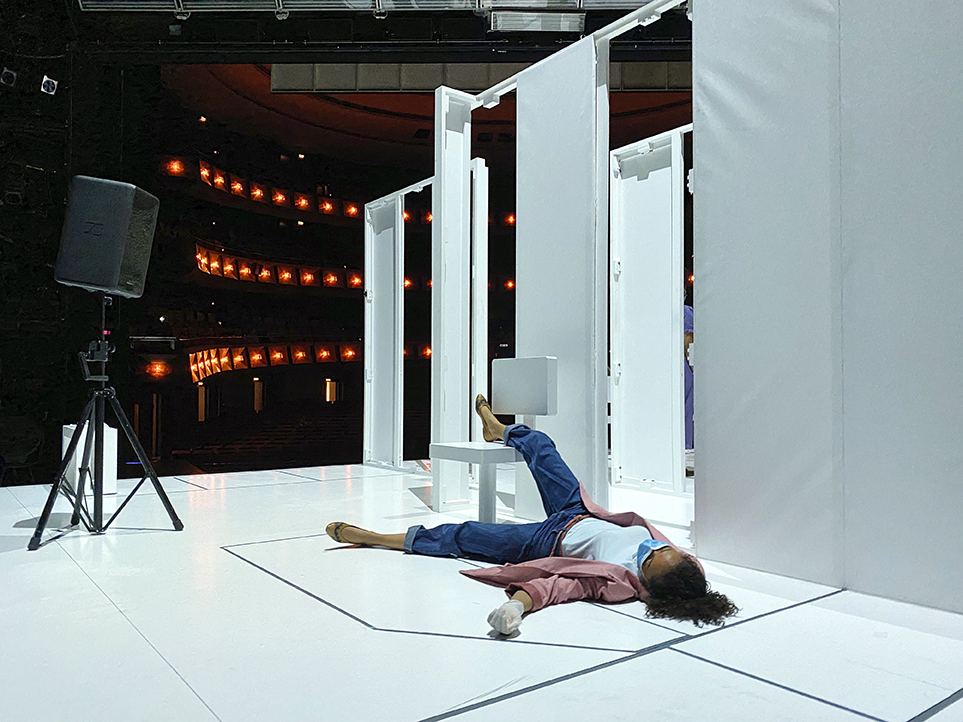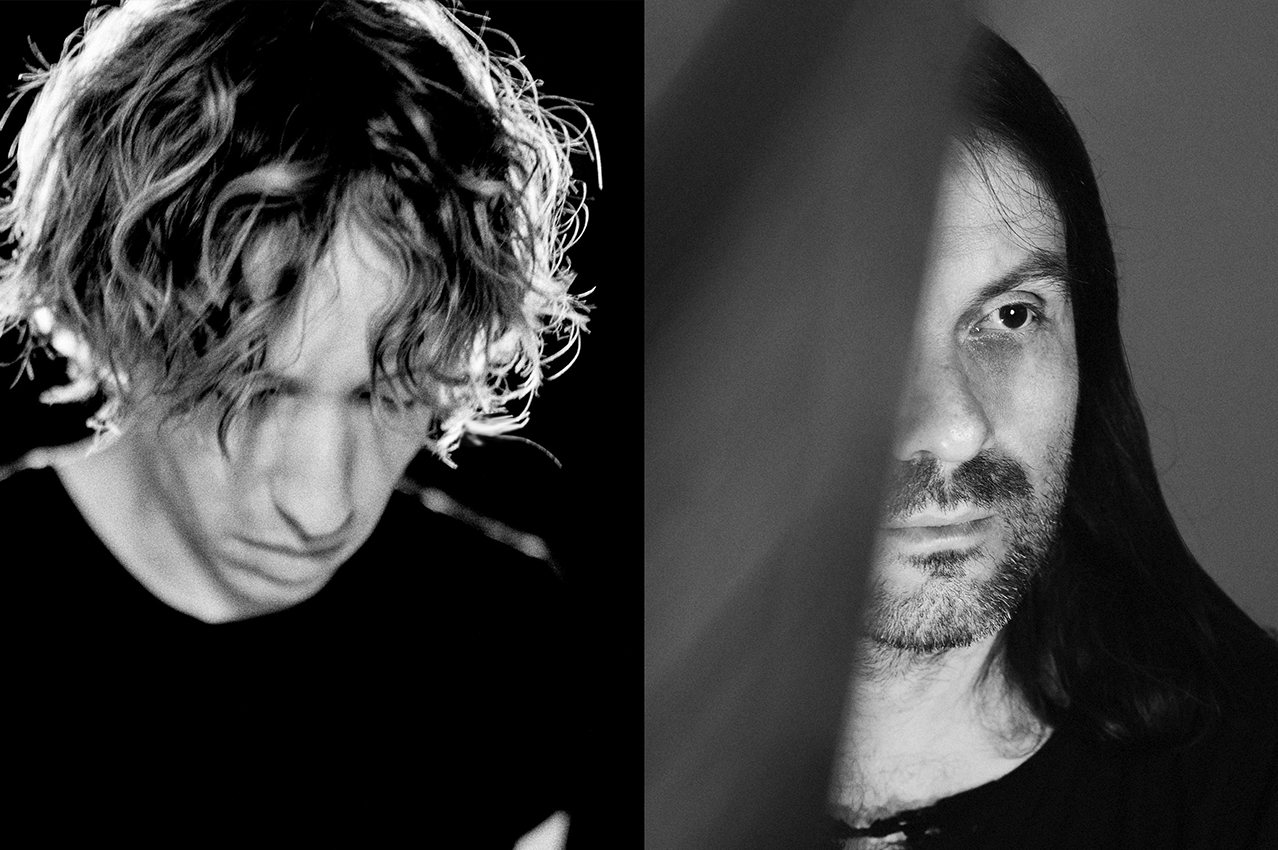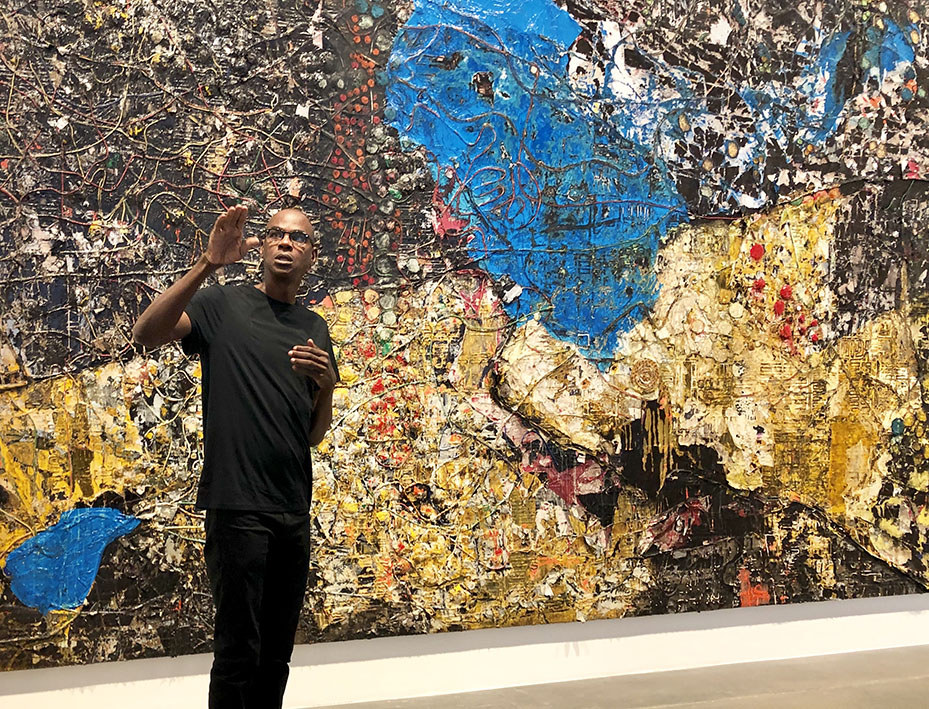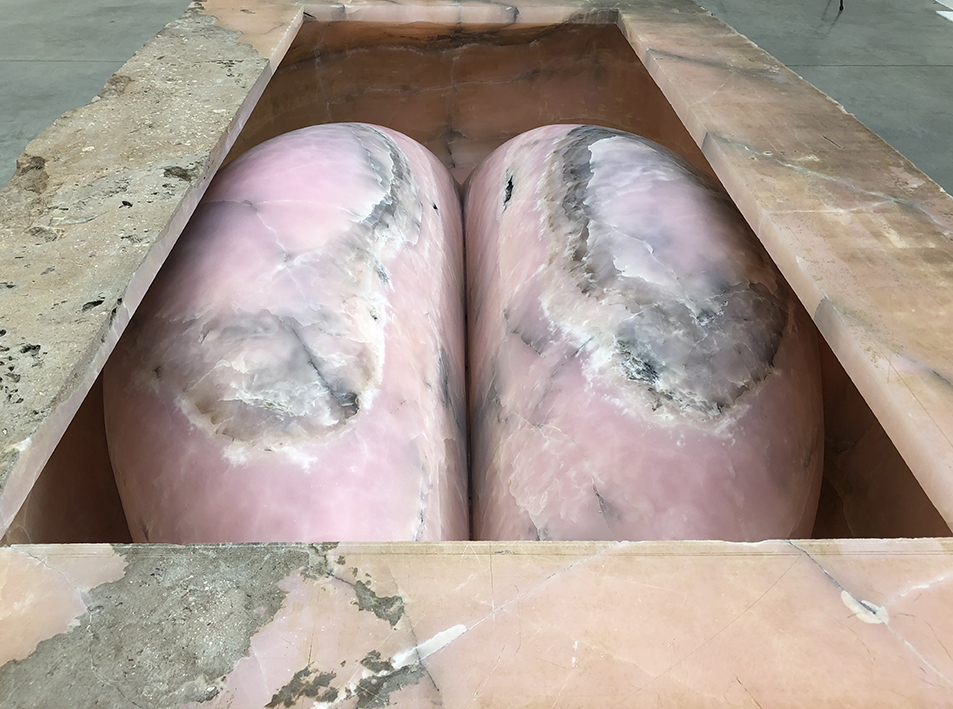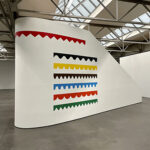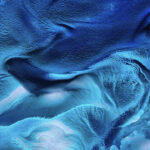 After our post on Villa Överby, the impeccable, clinical house that is the perfect facade for Martin Vanger’s sick mind in ‘The Girl with the Dragon Tattoo’, many readers asked about the artwork hanging in the house. As we were curious also we started to investigate its ‘story’.
200%: John, as you are the architect of Villa Överby, perhaps you are able to tell us about the art work that is hanging in Martin Vanger’s house?
John Robert Nilsson: I know what kind of art that is normally placed in Villa Överby as I made some recommendations to the owner. Unfortunately, I really didn’t notice what they had at Vanger’s house in the film, but I checked with the owner. The original art was removed and replaced with something dark and abstract that was made especially for the film. I don’t have any details about it other than it was some repro-work undertaken in Stockholm. It is a good question, though, as I’m interested also to see what Martin Vanger would have chosen.
Does Stellan Skarsgård, the actor who plays Martin Vanger in the film, know what art work his character would have chosen?
Stellan Skarsgård: I am sorry but I have no clue from where the art came. It could very well be made by set decorators as far as I know. You could contact the production designer, Donald Graham Burt, as he should know.
So we did. We contacted the production designer of the film, Donald Graham Burt, to ask if he could tell us more about the art work that featured in the film.
Donald Graham Burt: The art in the set is original work created by my Swedish art director Frida Arvidsson.
200%: Frida, could you tell us something about the art work that you created for the set?
Frida Arvidsson: Although I realized it might be hard, initially I wanted to explore the possibility of using contemporary Swedish art for the set; very soon, though, it became clear that we had to create most of the art works from scratch. The art in Martin Vanger’s kitchen, living room and hallway had to have certain properties – besides their artistic expressions – when it came to size, colour shades, and surface reflections. To make them myself was a temptation too hard to resist, but also a challenge as criticizing unconvincing art works in films used to be one of our family’s favourite pastimes.
I worked with enormous amounts of ink, charcoal and paper, and equal parts of chance and deliberation to make quite small abstract images, which soon filled the floor in my living room. The handful of images with which I was pleased were scanned, enlarged and then printed with a pigment ink printer on fine art paper. This technique also made it possible for me to make small alterations and to even add some washes and colour fields by using layers digitally. Finally, we had carefully framed art works that were tailor made to function in the set.
After our post on Villa Överby, the impeccable, clinical house that is the perfect facade for Martin Vanger’s sick mind in ‘The Girl with the Dragon Tattoo’, many readers asked about the artwork hanging in the house. As we were curious also we started to investigate its ‘story’.
200%: John, as you are the architect of Villa Överby, perhaps you are able to tell us about the art work that is hanging in Martin Vanger’s house?
John Robert Nilsson: I know what kind of art that is normally placed in Villa Överby as I made some recommendations to the owner. Unfortunately, I really didn’t notice what they had at Vanger’s house in the film, but I checked with the owner. The original art was removed and replaced with something dark and abstract that was made especially for the film. I don’t have any details about it other than it was some repro-work undertaken in Stockholm. It is a good question, though, as I’m interested also to see what Martin Vanger would have chosen.
Does Stellan Skarsgård, the actor who plays Martin Vanger in the film, know what art work his character would have chosen?
Stellan Skarsgård: I am sorry but I have no clue from where the art came. It could very well be made by set decorators as far as I know. You could contact the production designer, Donald Graham Burt, as he should know.
So we did. We contacted the production designer of the film, Donald Graham Burt, to ask if he could tell us more about the art work that featured in the film.
Donald Graham Burt: The art in the set is original work created by my Swedish art director Frida Arvidsson.
200%: Frida, could you tell us something about the art work that you created for the set?
Frida Arvidsson: Although I realized it might be hard, initially I wanted to explore the possibility of using contemporary Swedish art for the set; very soon, though, it became clear that we had to create most of the art works from scratch. The art in Martin Vanger’s kitchen, living room and hallway had to have certain properties – besides their artistic expressions – when it came to size, colour shades, and surface reflections. To make them myself was a temptation too hard to resist, but also a challenge as criticizing unconvincing art works in films used to be one of our family’s favourite pastimes.
I worked with enormous amounts of ink, charcoal and paper, and equal parts of chance and deliberation to make quite small abstract images, which soon filled the floor in my living room. The handful of images with which I was pleased were scanned, enlarged and then printed with a pigment ink printer on fine art paper. This technique also made it possible for me to make small alterations and to even add some washes and colour fields by using layers digitally. Finally, we had carefully framed art works that were tailor made to function in the set.
 200%: Could you mention some good examples of good art in film that you’ve seen?
FA: I have a weak spot for films that use art from real artists like the Francis Bacon portrait of George Dyer in ‘Inception’, which is a subject a small conversation at the beginning of the movie. The Mark Rothko featured in ‘Mad Men’ and Pieter Bruegel’s painting, ‘Hunters in the Snow’ which Andrei Tarkovsky uses in both ‘Solaris’ and ‘The Mirror’, that is also present in Lars von Trier’s ‘Melancholia’, are some examples of good art in film scenes.
200%: What were the creative discussions / considerations you had with Donald Burt and the director of the film David Fincher?
FA: David Fincher and Donald Burt had a very clear idea for the tone of the film from the start; Don conveyed a very distinct image of all the sets including Martin’s home. When it came to his instructions for the art works the references he gave me were monochrome, powerful and mainly from abstract expressionism and minimalism. I found a lot of good art within these genres during my research, some of which was new to me. It served as a starting point, but our result couldn’t be too comparable: if you try to mimic the style of a specific artist you will end up with nothing but a bad copy. I had to find a position somewhere in between these sources of inspiration whilst at the same time, making it look contemporary.
200%: For inspiration did you look to Jackson Pollock and Barnett Newman’s work, or any other artists?
FA: Not really Pollock, a bit Barnett Newman, but more of Franz Kline and paintings by Richard Serra.
200%: When creating the art work did you take into account that this is what the character, Martin Vanger, would have chosen to display in his home?
FA: From the fictional character’s point of view the art seems to be chosen for being expressive but not too loud, tasteful but not too interesting. In my view Martin Vanger wants to appear quiet and neutral, modest but still with a certain sense of style. When watching the movie the art works might tell us something about the darkness inside the character; the neutrality he wants to convey turns into coldness, the quiet expressiveness speaks of the violence he keeps hidden.
Interviews conducted by Thierry Somers, Picture of Villa Överby
200%: Could you mention some good examples of good art in film that you’ve seen?
FA: I have a weak spot for films that use art from real artists like the Francis Bacon portrait of George Dyer in ‘Inception’, which is a subject a small conversation at the beginning of the movie. The Mark Rothko featured in ‘Mad Men’ and Pieter Bruegel’s painting, ‘Hunters in the Snow’ which Andrei Tarkovsky uses in both ‘Solaris’ and ‘The Mirror’, that is also present in Lars von Trier’s ‘Melancholia’, are some examples of good art in film scenes.
200%: What were the creative discussions / considerations you had with Donald Burt and the director of the film David Fincher?
FA: David Fincher and Donald Burt had a very clear idea for the tone of the film from the start; Don conveyed a very distinct image of all the sets including Martin’s home. When it came to his instructions for the art works the references he gave me were monochrome, powerful and mainly from abstract expressionism and minimalism. I found a lot of good art within these genres during my research, some of which was new to me. It served as a starting point, but our result couldn’t be too comparable: if you try to mimic the style of a specific artist you will end up with nothing but a bad copy. I had to find a position somewhere in between these sources of inspiration whilst at the same time, making it look contemporary.
200%: For inspiration did you look to Jackson Pollock and Barnett Newman’s work, or any other artists?
FA: Not really Pollock, a bit Barnett Newman, but more of Franz Kline and paintings by Richard Serra.
200%: When creating the art work did you take into account that this is what the character, Martin Vanger, would have chosen to display in his home?
FA: From the fictional character’s point of view the art seems to be chosen for being expressive but not too loud, tasteful but not too interesting. In my view Martin Vanger wants to appear quiet and neutral, modest but still with a certain sense of style. When watching the movie the art works might tell us something about the darkness inside the character; the neutrality he wants to convey turns into coldness, the quiet expressiveness speaks of the violence he keeps hidden.
Interviews conducted by Thierry Somers, Picture of Villa Överby

